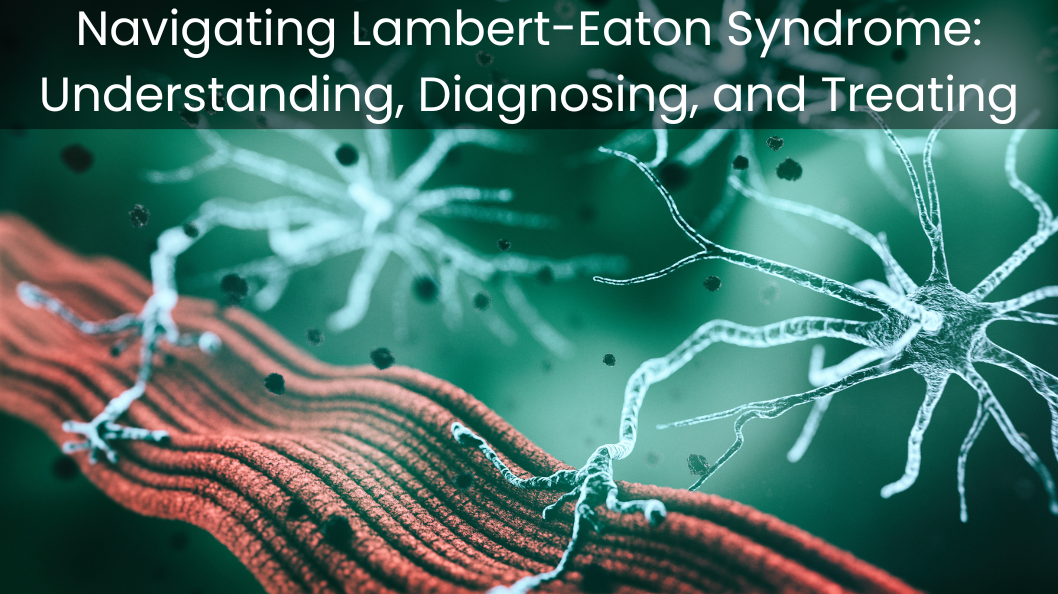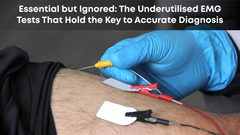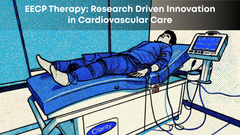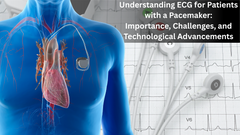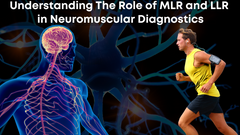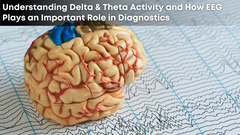Navigating Lambert-Eaton Syndrome: Understanding, Diagnosing, and Treating
What is Lambert-Eaton Syndrome?
Lambert-Eaton Syndrome is a rare autoimmune disorder affecting the neuromuscular junction, where nerve cells communicate with muscles. Named after the physicians who first described it in the 1950s, LES disrupts the normal release of acetylcholine, a neurotransmitter responsible for transmitting signals between nerves and muscles. This disruption leads to muscle weakness, autonomic dysfunction, and other symptoms that significantly impact an individual's quality of life.
What Causes Lambert-Eaton Syndrome?
The primary cause of Lambert-Eaton Syndrome lies in the immune system's misdirected response. In many cases, LES is paraneoplastic, meaning it is associated with an underlying malignancy, most commonly small-cell lung cancer. The immune system, in its attempt to combat cancer, inadvertently targets the neuromuscular junction, attacking calcium channels critical for acetylcholine release.
In non-paraneoplastic cases, the connection to cancer is absent, and researchers are actively exploring genetic and environmental factors that may trigger the immune system's assault on the neuromuscular junction.
What are the Symptoms of Lambert-Eaton Syndrome?
Lambert-Eaton Syndrome presents a spectrum of symptoms, varying in severity from person to person. Common manifestations include:
> Muscle Weakness: Proximal muscles, closer to the body's core, are particularly affected. Tasks like rising from a seated position, climbing stairs, and lifting objects become challenging.
> Autonomic Dysfunction: Dry mouth, constipation, blurred vision, and difficulty regulating body temperature may occur due to the impact of LES on the autonomic nervous system.
> Fatigue: Persistent fatigue is a common complaint, resulting from the combination of muscle weakness and autonomic dysfunction.
> Impaired Reflexes: Reflexes may be diminished or absent, reflecting the disruption in nerve signal transmission.
> Respiratory Complications: In severe cases, Lambert-Eaton Syndrome can affect respiratory muscles, leading to breathing difficulties, particularly in advanced stages.
How is Lambert-Eaton Syndrome Diagnosed?
Accurate diagnosis of Lambert-Eaton Syndrome involves a comprehensive approach, as its symptoms can overlap with other neuromuscular disorders. Key diagnostic methods include:
> Electromyography (EMG): EMG is a crucial tool that assesses the electrical activity of muscles and nerve cells. In Lambert-Eaton Syndrome, EMG often reveals a characteristic pattern of low-amplitude, high-frequency compound muscle action potentials (CMAPs).
> Blood Tests: Specific antibodies associated with Lambert-Eaton Syndrome can be detected through blood tests. The most common antibody is the P/Q-type voltage-gated calcium channel antibody.
How is Lambert-Eaton Syndrome Treated?
While there is no cure for Lambert-Eaton Syndrome, various treatment approaches aim to manage symptoms and improve the patient's quality of life:
> Immunosuppressive Therapy: Immunosuppressant medications, such as corticosteroids and intravenous immunoglobulin (IVIG), may be prescribed to modulate the immune system's response.
> Symptomatic Relief: Medications like 3,4-diaminopyridine (3,4-DAP) can improve nerve signal transmission and alleviate muscle weakness.
> Physical Therapy: Physical therapy plays a crucial role in maintaining muscle strength, improving mobility, and managing fatigue.
> Treatment of Underlying Cancer: In paraneoplastic cases, addressing the underlying malignancy is essential. This may involve surgery, chemotherapy, or radiation therapy.
Can Lambert-Eaton Syndrome be Prevented?
Preventing Lambert-Eaton Syndrome is challenging due to its complex and often unpredictable nature. As the majority of cases are paraneoplastic, vigilant cancer screening in high-risk individuals may help detect and treat associated malignancies at an early stage, potentially reducing the risk of developing LES.
How Clarity Medical's EMG can be of use?
Clarity Medical's EasyTrace EMG plays a pivotal role in the diagnosis and management of Lambert-Eaton Syndrome. EasyTrace allows healthcare professionals to assess the electrical activity of muscles and nerve cells, providing valuable insights into the characteristic patterns associated with LES.
The precision and sensitivity of Clarity Medical's EMG enable early detection of Lambert-Eaton Syndrome, facilitating prompt intervention and personalized treatment plans. Additionally, EMG can be instrumental in monitoring disease progression, adjusting treatment strategies, and optimizing rehabilitation efforts for improved patient outcomes.


